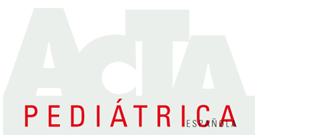Resumen
Introducción: La patología del sueño infantil, incluido el síndrome de apnea del sueño (SAS), ha ganado relevancia recientemente. La bibliografía se centra mayoritariamente en el SAS obstructivo, mientras que se asume que el SAS central es un problema madurativo, exceptuando los grandes prematuros en las unidades neonatales. Asimismo, no hay un claro consenso sobre los índices normales de apneas centrales en lactantes ni neonatos sanos.
Caso clínico: Niña lactante de 1 mes de vida, con apneas durante el sueño presentes desde el nacimiento, sin otros antecedentes de interés y con exploración física normal. Con sospecha de SAS central, se realizó una polisomnografía, que confirmó la presencia de un SAS central grave. Se amplió el estudio para descartar patologías predisponentes (ecografía transfontanelar, ecocardiograma, analítica sanguínea y estudio metabólico), con resultados normales. Se inició tratamiento con cafeína, con excelente tolerancia por parte de la paciente y desaparición de los síntomas. En la segunda polisomnografía se apreció mejoría, por lo que se inició un descenso de la medicación hasta su suspensión. El tercer estudio de sueño resultó normal, y la paciente permaneció asintomática posteriormente.
Discusión y conclusiones: El SAS central también es una entidad que cabe tener en cuenta en la infancia, que aparece con mayor frecuencia en neonatos y lactantes menores de 3 meses. Su pronóstico suele ser bueno, y tiende a desaparecer espontáneamente, excepto en casos con una patología grave asociada. El diagnóstico se confirma mediante polisomnografía y habitualmente no precisa tratamiento, pero si este es necesario (severidad o repercusión oximétrica), puede administrarse cafeína, acetazolamida u oxigenoterapia convencional (reservando la ventilación no invasiva para casos refractarios).














